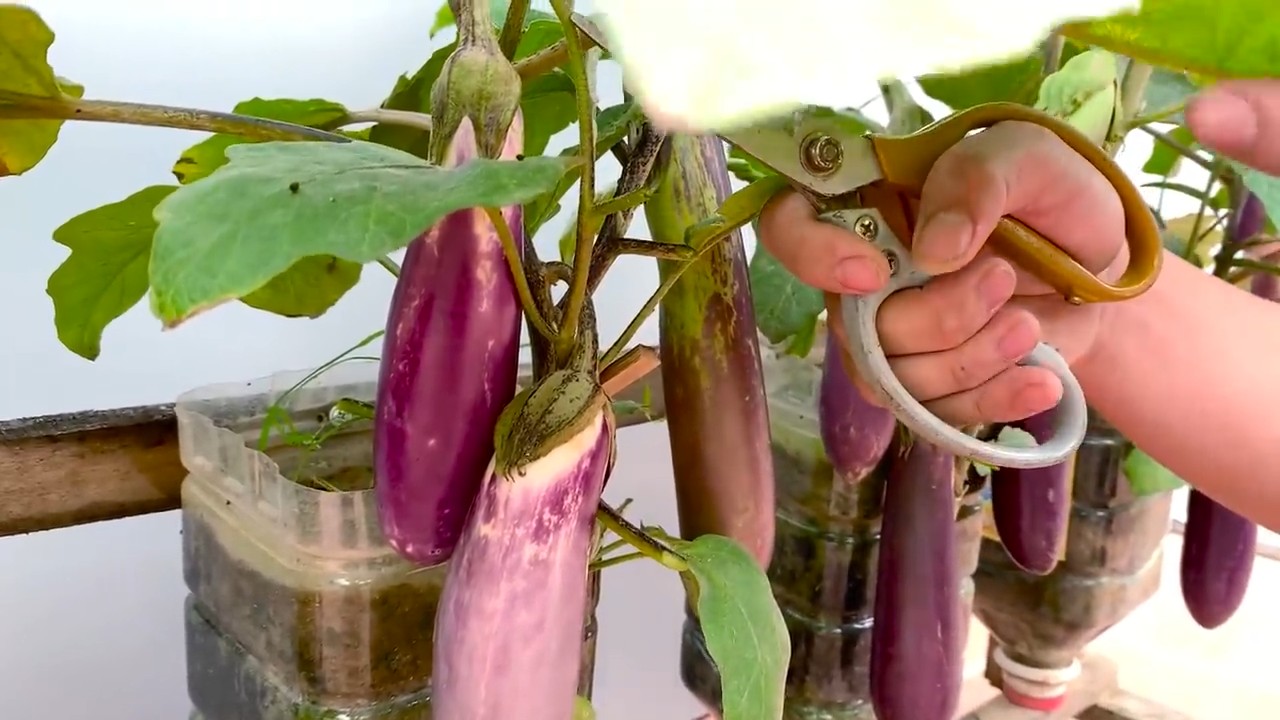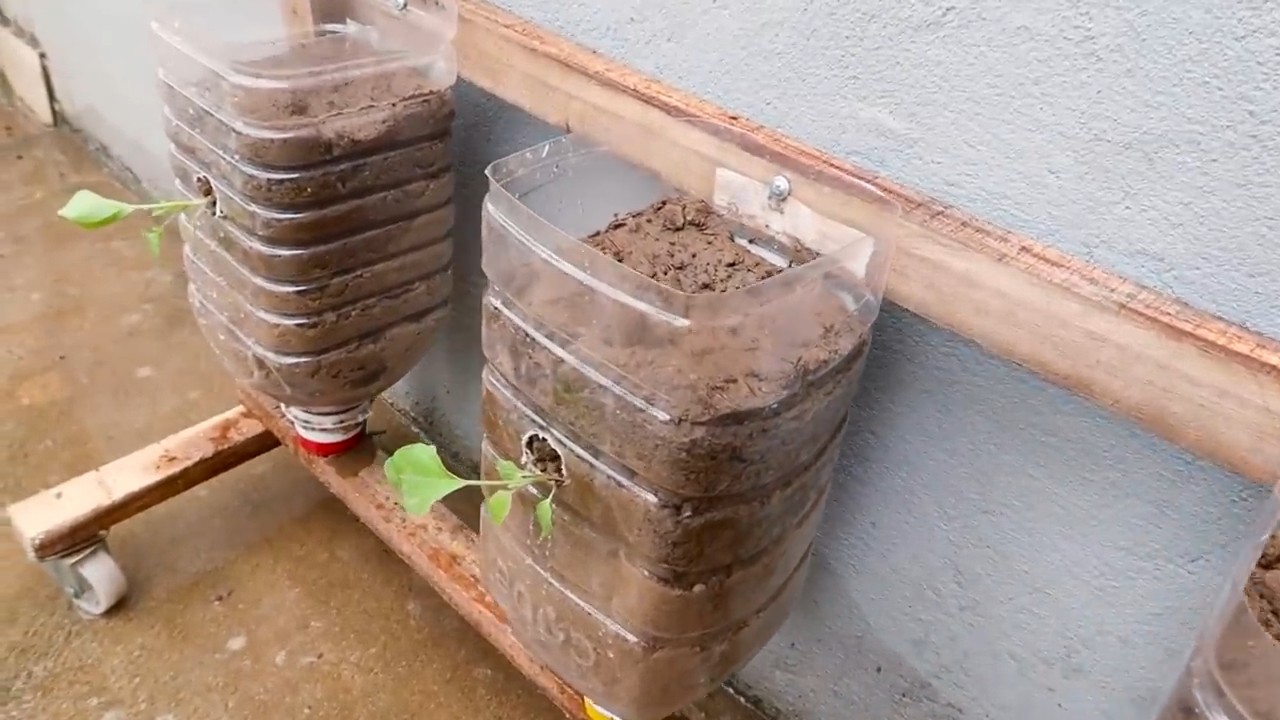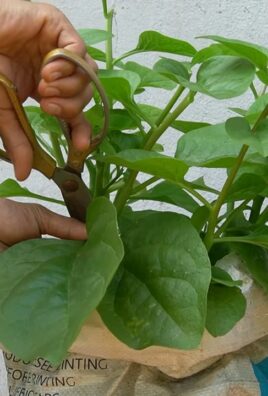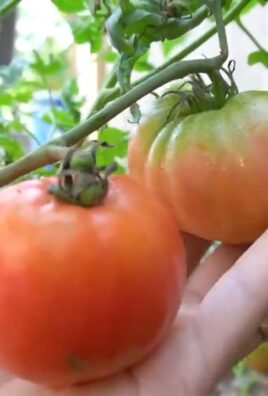Easy eggplant growing tips are what every gardener, from novice to seasoned pro, craves! Let’s face it, eggplants can be a bit temperamental. You’ve probably heard the whispers – they need just the right amount of sun, the perfect soil, and a whole lot of TLC. But what if I told you that growing plump, juicy eggplants in your own backyard could be simpler than you think?
For centuries, eggplants have held a special place in cuisines around the world, from the Mediterranean’s moussaka to Asia’s flavorful curries. They’re not just delicious; they’re packed with nutrients! But the journey from seed to table can sometimes feel like a daunting task. That’s where these DIY tricks come in.
Imagine harvesting your own vibrant, glossy eggplants, knowing you nurtured them from tiny seedlings. No more relying on grocery store produce – you’ll have fresh, organic eggplants right at your fingertips! This article is your guide to unlocking the secrets of easy eggplant growing tips. I’m going to share simple, actionable strategies that will help you overcome common challenges and enjoy a bountiful harvest. So, grab your gardening gloves, and let’s get started on your eggplant-growing adventure!

Unlock the Secrets to Growing Luscious Eggplants at Home!
Okay, eggplant lovers, let’s dive into the wonderful world of growing your own delicious, glossy eggplants! I’m going to share all my tried-and-true tips and tricks to help you cultivate a thriving eggplant patch, even if you’re a beginner gardener. Get ready for a bountiful harvest!
Choosing the Right Eggplant Variety
First things first, selecting the right eggplant variety is crucial for success. Consider your climate, available space, and personal preferences. Here are a few popular options:
* Black Beauty: A classic, reliable variety that produces large, dark purple eggplants. Great for beginners!
* Ichiban: Known for its long, slender, and mild-flavored fruits. Perfect for grilling and stir-fries.
* Fairy Tale: A beautiful and compact variety with small, striped fruits. Ideal for container gardening.
* Rosa Bianca: Produces stunning, lavender-and-white striped eggplants with a creamy texture. A real showstopper!
* Japanese Eggplant: These are long and thin, with a delicate flavor. They cook quickly and are great in Asian dishes.
Starting Your Eggplant Journey: Seeds vs. Seedlings
You have two main options for starting your eggplant plants: from seeds or from seedlings (also known as transplants).
* Starting from Seeds: This gives you more control over the process and allows you to choose from a wider variety of eggplants. However, it requires more time and effort. Eggplants need a long growing season, so you’ll need to start your seeds indoors about 8-10 weeks before the last expected frost.
* Buying Seedlings: This is a quicker and easier option, especially if you’re short on time or space. Just make sure to choose healthy-looking seedlings with strong stems and no signs of pests or diseases.
Step-by-Step Guide to Growing Eggplants
Alright, let’s get our hands dirty! Here’s a detailed guide to growing eggplants from start to finish:
Section 1: Starting Seeds Indoors (If Applicable)
1. Gather Your Supplies: You’ll need:
* Eggplant seeds
* Seed starting trays or small pots
* Seed starting mix (a light, well-draining soil mix)
* A spray bottle filled with water
* A heat mat (optional, but recommended)
* A grow light (optional, but recommended)
2. Sow the Seeds: Fill your seed starting trays or pots with seed starting mix. Moisten the soil with the spray bottle. Sow the eggplant seeds about ¼ inch deep, placing 2-3 seeds per cell or pot. Gently cover the seeds with soil and water again.
3. Provide Warmth and Light: Place the seed starting trays on a heat mat to maintain a soil temperature of around 80-85°F (27-29°C). This will help the seeds germinate faster. If you’re using a grow light, position it a few inches above the trays and keep it on for 14-16 hours per day.
4. Keep the Soil Moist: Check the soil moisture daily and water as needed to keep it consistently moist, but not soggy. Use the spray bottle to avoid disturbing the seeds.
5. Thin the Seedlings: Once the seedlings emerge (usually within 7-14 days), thin them to one strong seedling per cell or pot. Snip off the weaker seedlings at the soil line with scissors.
6. Harden Off the Seedlings: About a week before you plan to transplant the seedlings outdoors, you’ll need to “harden them off.” This process gradually acclimates the seedlings to outdoor conditions. Start by placing the trays outdoors in a sheltered location for a few hours each day, gradually increasing the amount of time they spend outside. Protect them from direct sunlight and strong winds.
Section 2: Preparing the Garden Bed
1. Choose a Sunny Location: Eggplants need at least 6-8 hours of direct sunlight per day to thrive. Select a location in your garden that receives plenty of sunshine.
2. Prepare the Soil: Eggplants prefer well-drained, fertile soil with a pH of 6.0-7.0. Amend the soil with compost or other organic matter to improve its drainage and fertility. I like to add aged manure for an extra boost!
3. Test the Soil (Optional): If you’re unsure about your soil’s pH or nutrient levels, consider getting a soil test. This will help you determine if you need to add any amendments to balance the soil.
4. Create Raised Beds (Optional): Raised beds can improve drainage and soil warming, which is especially beneficial in cooler climates.
Section 3: Transplanting Eggplant Seedlings
1. Wait for Warm Weather: Eggplants are very sensitive to frost. Wait until all danger of frost has passed and the soil has warmed up to at least 60°F (15°C) before transplanting your seedlings outdoors.
2. Dig Holes: Dig holes that are slightly larger than the root balls of the seedlings. Space the holes about 18-24 inches apart.
3. Gently Remove Seedlings: Carefully remove the seedlings from their trays or pots, being careful not to damage the roots.
4. Plant the Seedlings: Place the seedlings in the holes and gently backfill with soil. Make sure the top of the root ball is level with the surrounding soil.
5. Water Thoroughly: Water the newly transplanted seedlings thoroughly to help them settle in.
6. Add Mulch: Apply a layer of mulch around the base of the plants to help retain moisture, suppress weeds, and regulate soil temperature. I like to use straw or shredded leaves.
Section 4: Caring for Your Eggplant Plants
1. Water Regularly: Eggplants need consistent moisture, especially during hot, dry weather. Water deeply and regularly, aiming to keep the soil evenly moist. Avoid overhead watering, as this can promote fungal diseases.
2. Fertilize Regularly: Eggplants are heavy feeders and benefit from regular fertilization. Use a balanced fertilizer or a fertilizer specifically formulated for vegetables. Follow the instructions on the fertilizer label. I usually fertilize every 2-3 weeks.
3. Provide Support: As the eggplants grow, they may need support to prevent the branches from breaking under the weight of the fruit. Use stakes or cages to support the plants.
4. Prune Your Plants: Pruning can help improve air circulation and sunlight penetration, which can lead to healthier plants and larger fruits. Remove any suckers (small shoots that grow from the base of the plant) and any yellowing or diseased leaves.
5. Watch Out for Pests and Diseases: Eggplants can be susceptible to various pests and diseases, such as aphids, flea beetles, and fungal diseases. Inspect your plants regularly and take action promptly if you notice any problems. Use organic pest control methods whenever possible.
* Flea Beetles: These tiny jumping beetles can create small holes in the leaves. Use row covers to protect young plants or spray with neem oil.
* Aphids: These small, sap-sucking insects can weaken plants. Spray with insecticidal soap or release ladybugs to control them.
* Tomato Hornworms: These large caterpillars can quickly defoliate plants. Handpick them off the plants or use Bacillus thuringiensis (Bt) spray.
* Verticillium Wilt and Fusarium Wilt: These fungal diseases can cause wilting and yellowing of the leaves. Choose disease-resistant varieties and practice crop rotation.
6. Weed Regularly: Keep the garden bed free of weeds, as they can compete with the eggplants for nutrients and water.
Section 5: Harvesting Your Eggplants
1. Harvest at the Right Time: Eggplants are typically ready to harvest about 65-80 days after transplanting, depending on the variety. The fruits should be firm, glossy, and have a deep, rich color.
2. Check the Skin: Gently press the skin of the eggplant. If it springs back slightly, it’s ripe. If it’s hard and doesn’t give, it’s not quite ready. If it’s soft and easily bruised, it’s overripe.
3. Use Pruning Shears: Use sharp pruning shears or a knife to cut the eggplants from the plant, leaving a short stem attached.
4. Handle with Care: Eggplants are delicate and can bruise easily. Handle them with care to avoid damaging the fruit.
5. Store Properly: Store harvested eggplants in the refrigerator for up to a week.
Troubleshooting Common Eggplant Problems
Even with the best care, you might encounter some challenges along the way. Here are a few common eggplant problems and how to address them:
* Blossom End

Conclusion
So, there you have it! Mastering eggplant cultivation doesn’t require a green thumb blessed by the gardening gods. It’s about understanding the plant’s needs and implementing a few simple, yet effective, strategies. This DIY approach to **easy eggplant growing tips** empowers you to take control of your garden and reap the rewards of fresh, delicious, homegrown eggplants.
Why is this a must-try? Because it’s accessible, affordable, and yields tangible results. Forget expensive fertilizers and complicated techniques. We’ve broken down the process into manageable steps, focusing on natural methods that promote healthy growth and abundant harvests. Imagine the satisfaction of serving a meal featuring eggplants you nurtured from seedling to table. That’s the power of DIY gardening!
But don’t stop there! Experiment with different varieties of eggplants. Try growing the classic Black Beauty, the slender Japanese eggplant, or the vibrant Thai eggplant. Each variety offers a unique flavor and texture, adding diversity to your culinary creations. Consider companion planting to further enhance your eggplant’s growth. Basil, thyme, and marigolds are excellent choices, deterring pests and attracting beneficial insects. You can also explore different trellising methods to support your plants and maximize space. Vertical gardening is a fantastic option for smaller gardens or balconies.
Remember, gardening is a journey of learning and discovery. Don’t be afraid to make mistakes and adapt your approach as needed. Observe your plants closely, paying attention to their leaves, stems, and fruits. This will help you identify any potential problems early on and take corrective action.
We are confident that these easy eggplant growing tips will set you on the path to success. Now, it’s your turn to get your hands dirty and experience the joy of growing your own eggplants. We encourage you to try these techniques and share your experiences with us. Post photos of your thriving eggplant plants, share your favorite recipes, and let us know what worked best for you. Your insights can help other gardeners achieve their eggplant-growing dreams! Let’s build a community of passionate gardeners, sharing knowledge and celebrating the bounty of our gardens. Happy gardening!
Frequently Asked Questions (FAQ)
What are the most common problems when growing eggplants, and how can I prevent them?
Eggplants are susceptible to a few common issues, but proactive measures can significantly reduce the risk. One frequent problem is pests, such as flea beetles, aphids, and tomato hornworms. To prevent infestations, inspect your plants regularly and handpick any pests you find. You can also use insecticidal soap or neem oil as a natural deterrent. Crop rotation can also help prevent soil borne pests and diseases.
Another common issue is blossom-end rot, which is caused by a calcium deficiency. To prevent this, ensure your soil is rich in calcium and maintain consistent watering. Adding crushed eggshells or bone meal to the soil can provide a natural source of calcium. Avoid over-fertilizing with nitrogen, as this can interfere with calcium uptake.
Fungal diseases, such as early blight and verticillium wilt, can also affect eggplants. To prevent these diseases, provide good air circulation around your plants and avoid overhead watering. Mulching around the base of the plants can also help prevent soilborne diseases from splashing onto the leaves.
How often should I water my eggplants?
Eggplants need consistent moisture to thrive, especially during hot weather. Water deeply and regularly, aiming for about 1-2 inches of water per week. Check the soil moisture by sticking your finger about an inch deep. If the soil feels dry, it’s time to water. Avoid overwatering, as this can lead to root rot. Mulching around the base of the plants can help retain moisture and reduce the need for frequent watering. Drip irrigation is an excellent option for providing consistent moisture directly to the roots.
When is the best time to harvest my eggplants?
Harvesting eggplants at the right time is crucial for optimal flavor and texture. Eggplants are typically ready to harvest about 60-80 days after transplanting. Look for fruits that are glossy, firm, and have a deep, even color. The skin should be smooth and unblemished. Gently press the skin with your thumb; if it springs back slightly, the eggplant is ripe. If the skin is hard and doesn’t give, it’s likely overripe and may be bitter. Use a sharp knife or pruning shears to cut the eggplant from the plant, leaving about an inch of stem attached.
Can I grow eggplants in containers?
Yes, eggplants can thrive in containers, making them a great option for gardeners with limited space. Choose a large container, at least 12-14 inches in diameter, to provide ample room for the roots to grow. Use a high-quality potting mix that drains well. Ensure the container has drainage holes to prevent waterlogging. Place the container in a sunny location that receives at least 6-8 hours of sunlight per day. Water regularly and fertilize every 2-3 weeks with a balanced fertilizer. You may need to stake the plants to provide support as they grow.
What are some good companion plants for eggplants?
Companion planting can benefit eggplants by deterring pests, attracting beneficial insects, and improving soil health. Some excellent companion plants for eggplants include:
* **Basil:** Repels aphids, spider mites, and whiteflies.
* **Thyme:** Deters cabbage moths and other pests.
* **Marigolds:** Repel nematodes and other soil pests.
* **Beans:** Fix nitrogen in the soil, benefiting eggplant growth.
* **Peppers:** Can be planted near eggplants, as they have similar growing requirements.
* **Spinach:** Provides ground cover and helps retain moisture.
Avoid planting eggplants near fennel, as it can inhibit their growth.
How do I deal with pests organically?
Dealing with pests organically is a great way to protect your eggplants and the environment. Here are a few effective methods:
* **Handpicking:** Regularly inspect your plants and handpick any pests you find.
* **Insecticidal Soap:** A natural and effective way to control aphids, spider mites, and whiteflies.
* **Neem Oil:** A broad-spectrum insecticide and fungicide that can control a variety of pests and diseases.
* **Diatomaceous Earth:** A natural powder made from fossilized algae that can kill insects by dehydrating them.
* **Beneficial Insects:** Attract beneficial insects, such as ladybugs and lacewings, which prey on pests.
* **Row Covers:** Use row covers to protect your plants from pests early in the season.
How can I improve the soil for growing eggplants?
Eggplants thrive in well-drained, fertile soil with a pH of 6.0-7.0. Here are a few ways to improve your soil:
* **Add Compost:** Compost is a great way to improve soil structure, drainage, and fertility.
* **Incorporate Manure:** Aged manure can provide essential nutrients for eggplant growth.
* **Use Cover Crops:** Plant cover crops, such as clover or rye, to improve soil health and prevent erosion.
* **Amend with Bone Meal:** Bone meal provides a natural source of phosphorus, which is essential for root development.
* **Test Your Soil:** A soil test can help you determine the nutrient levels in your soil and identify any deficiencies.
What type of fertilizer is best for eggplants?
Eggplants benefit from a balanced fertilizer with a slightly higher phosphorus content. A fertilizer with an NPK ratio of 5-10-5 or 10-20-10 is a good choice. Apply fertilizer every 2-3 weeks during the growing season. You can also use organic fertilizers, such as fish emulsion or seaweed extract. Avoid over-fertilizing with nitrogen, as this can lead to excessive foliage growth and reduced fruit production.
My eggplant flowers are dropping off. What could be the cause?
Flower drop can be frustrating, but it’s often caused by environmental factors. Common causes include:
* **High Temperatures:** Temperatures above 90°F can cause flowers to drop.
* **Low Temperatures:** Temperatures below 60°F can also cause flower drop.
* **Insufficient Pollination:** Ensure your plants are being pollinated by bees or other insects. You can also hand-pollinate the flowers.
* **Water Stress:** Inconsistent watering can lead to flower drop.
* **Nutrient Deficiencies:** A lack of phosphorus or other essential nutrients can cause flower drop.
* **Pest Infestations:** Severe pest infestations can stress the plants and cause flower drop.
How do I overwinter my eggplant plants?
While eggplants are typically grown as annuals, you can overwinter them in warmer climates (zones 9 and above). Before the first frost, prune the plants back to about 12 inches tall. Dig up the plants and pot them in containers. Bring the containers indoors and place them in a cool, bright location. Water sparingly during the winter months. In the spring, gradually acclimate the plants to outdoor conditions before transplanting them back into the garden.




Leave a Comment